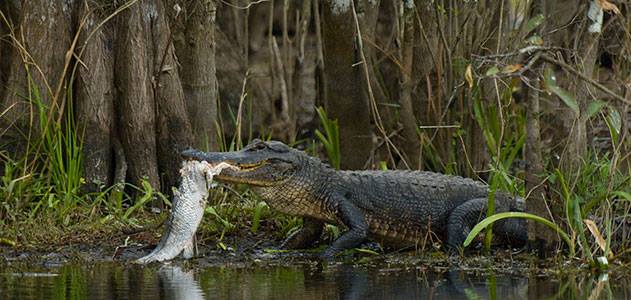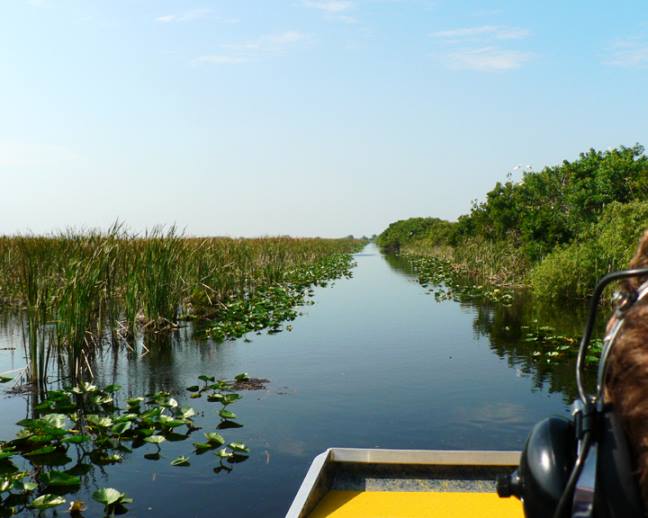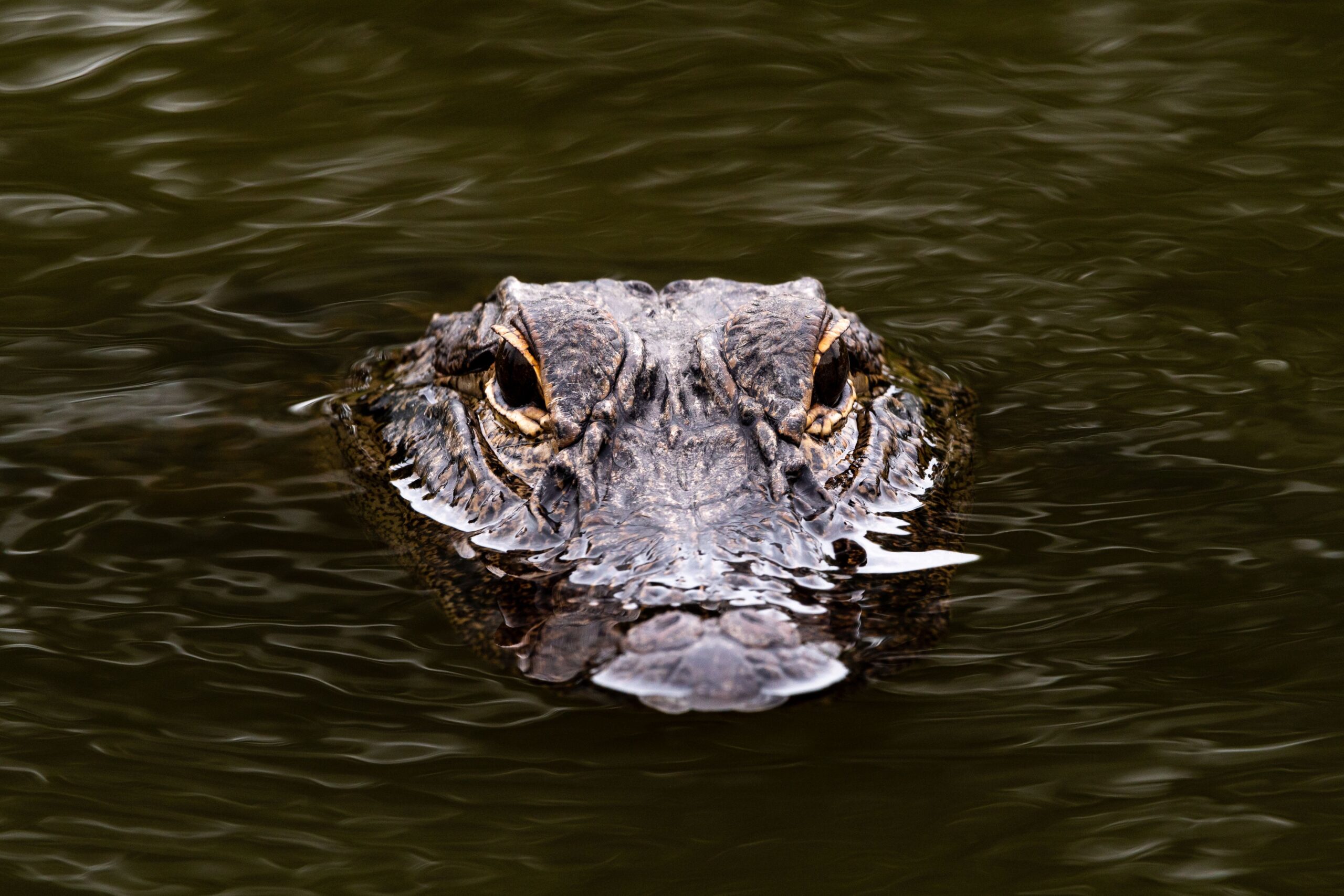The varied habitats of the Everglades enable a large number of diverse plants and animals to survive. While populations have decreased drastically, the Everglades is still home to a wide range of species. This section will explore some of the different species found in the Everglades today.
American Alligator
Alligators live primarily in fresh water, although they will occasionally venture into the brackish water for short periods of time. At an average length between 13 and 15 feet, alligators have the strength and speed to prey on most land mammals in the Everglades but usually feed on small mammals, fish, birds, and reptiles. Alligators live primarily in marshes and sloughs, where they are vital to the ecosystem because of the “gator” holes they create when they dig into the marsh soil. These holes usually retain water during the dry season, providing a habitat for many animals when water is scarce. Alligators lay between 20 and 50 eggs at a time in nests found above water on the shores of marshes and sloughs. Mother alligators stay near the nest to protect the incubating eggs, and once hatched, usually protect the pod of juvenile alligators for up to a year. Alligators hibernate during winter, decreasing activity in temperatures under 80°F and ceasing to feed entirely at less than 73°F. The American alligator was once hunted and threatened but has recovered due to closely monitored conservation efforts. The American alligator is closely related to two other species found in the Everglades, the American crocodile, and the non-native caiman. Alligators can usually be identified by their broad, rounded snouts.

Florida Panther
The Florida panther ranged over the entire southeastern United States approximately 1500 years ago but because of human hunting and habitat destruction, they now only inhabit the Everglades. The current wild population is estimated to be between 80 to 100 adults, classifying the Florida panther as a critically endangered species. The panther is a carnivore, feeding on white-tailed deer, wild hogs, raccoons, and armadillos. They prefer to live on the ground in hammocks, pinelands, hardwood swamps, cypress swamps, and occasionally prairies and freshwater marshes. The female panther will give birth to one to four cubs per litter, which they raise without help from male panthers. The cubs typically stay with the mother for less than two years. Panthers can live up to 12 years in the wild, and usually, die from health issues such as rabies and congenital heart defects, or are killed by other panthers. Most panthers are approximately two feet high at the shoulder and six to seven feet in length. Adult males weigh between 100 and 150 pounds. Females are smaller, weighing between 65 and 100 pounds. Both males and females are born with black spots which fade to a reddish-tan coat in adulthood.
Wood stork
The wood stork, the only common stork in the United States, is an endangered species native to wetland communities. Unlike many wading birds, wood storks hunt by touch rather than sight, dipping their beaks into the water and feeling for prey. Since this technique requires a large amount of prey in a small area, wood storks usually begin to die off early and quickly when wetlands are in danger or destroyed. As a result, they are considered a key species to watch when monitoring wetland conservation. Approximately 1000 nesting pairs have been reported in the Everglades, up from the 100 nesting pairs reported in the 1980s. Wood storks are large, between two and a half to four feet tall with a five-foot wingspan. Adult birds are white with dark, green or purple-tinged feathers on their tails and wing tips. Everglades wood storks begin breeding in November and build nests over water in cypress swamps, mangrove forests, or on islands. The nests are usually placed over standing water to deter predators from eating the eggs or young chicks. Both males and females raise the chicks. Although wood storks can be found in wetlands throughout the southeast coast of the United States, the population is concentrated in the Everglades.

Manatee
Manatees are marine mammals that can be found in fresh, brackish and salty waters on the coast of the southeastern United States. They tend to inhabit Florida waters, but may range as far west as Texas and as far north as Virginia in warm summer months. Manatees are unusual because they have no natural predators. They are herbivores and may eat up to fifteen times their body weight in vegetation in one day. Male manatees average 9.8 feet in length, weigh up to 1,200 pounds and are believed to live up to 60 years in the wild. Unfortunately, due to threats from humans such as motorboat strikes, and natural threats such as red tide, most manatees in the wild die between 0 – 10 years of age and few live past 30 years. Manatees usually bear just one calf per birth, although twins are possible. The gestation period is approximately one year and mothers care for calves for about two years. In the Everglades, manatees are most commonly found in mangrove swamps and the Florida Bay.
Click here to know more about the history of the Florida Everglades







